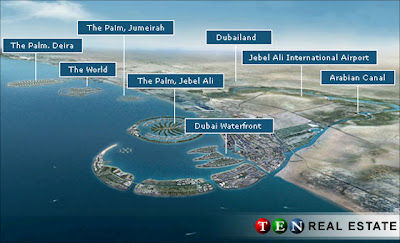The Dubai Waterfront will extend Dubai's coastline by 820 kilometers, twelve times the length of its current coastline. It will consist of 440 square kilometers of water and land developments, an area seven times the size of Manhattan, New York in the United States. It is expected to house 400,000 people.
Located near to the new Dubai World Central International Airport, and with direct access to Sheikh Zayed Road, Jebel Ali Freezone and Abu Dhabi, the city will be fully accessible on a local and international scale.
The project will feature hundreds of waterfront developments and planned communities. It will consist of 10 key areas including Madinat Al Arab , which is expected to become the new downtown and central business district of Dubai. Madinat Al Arab has been carefully crafted and developed by an international consortium of highly regarded architects, planners and urban developers. It will be anchored by Al Burj, which when completed is expected to be 700 meters to one kilometer in height, making it one of the world's tallest buildings. Madinat Al Arab will feature resorts, retail, commercial spaces, public spaces, a broad mix of residencies and an integrated transport system including light rail and a sophisticated road network.
Related Topics:
Dubai Sightseeing
Dubai Visa
Dubai Airport
Things to do in Dubai
Burj Dubai tower





